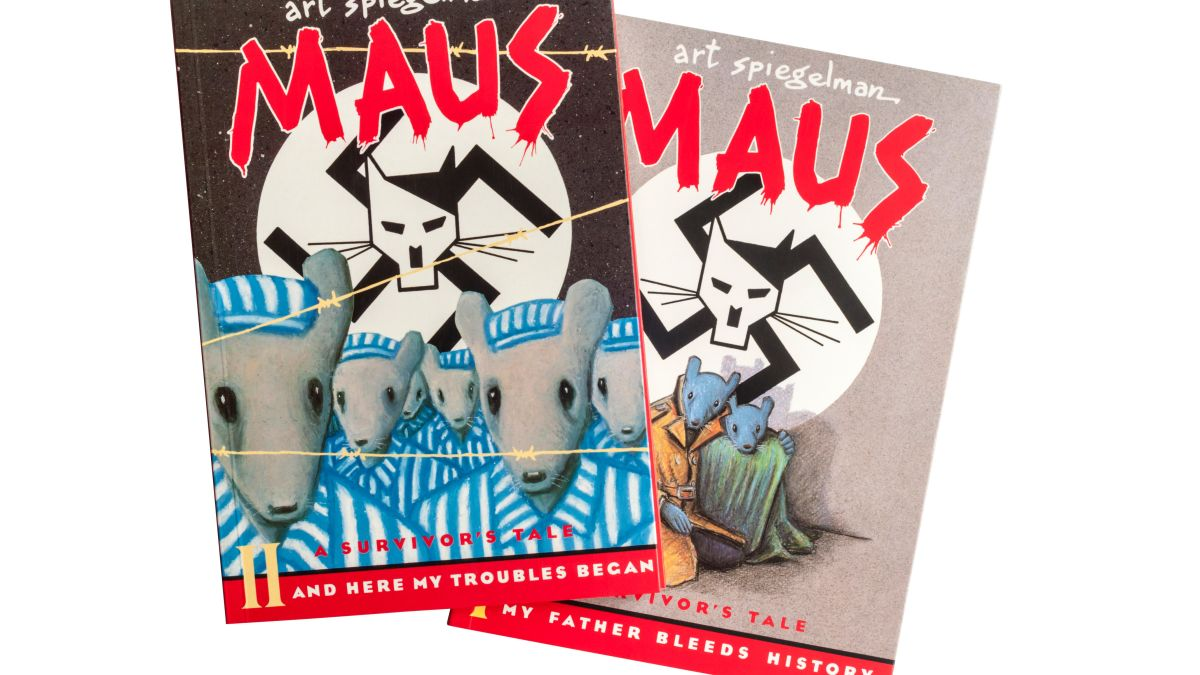The graphic novel Maus is in the news today, because some school district somewhere is "banning" it from their 8th grade curriculum (that is: choosing not to assign the book anymore because they think some of the content is not suitable for 8th graders. Not assigning a book is of course not "banning" it, but that's a discussion for another day.)
I've had the book for years and read it multiple times. It's a compelling read. I'm not actually going to talk about the current controversy at all, the news headlines just served to remind me of an interesting narrative/artistic challenge the book deals with.
The novel tells the story of author Art Spiegelman's father during the Holocaust as a Polish Jew. Though the story is fully realistic in tone, as a visual device it depicts Jews as mice, Germans as cats, Poles as pigs, Americans as dogs, etc.
This choice does some really interesting things, both in terms of visually showing the character's sense of alienation and being hunted by the rest of society, and also perhaps providing a bit of distance in a story which is hard to read even in this somewhat cartoon-ized form.
It is a successful visual and narrative choice.
But even so, it brings with it certain limits, as any artistic choice does. After all, the story is, at root, about people, not about animals of different species. And so, naturally, we end up seeing some examples of mixed families. In one scene I recall a mixed Polish/Jewish married couple have children who are a cross between mice and pigs.
In one sense, that seems oddly essentialist. The idea of mice and pigs interbreeding in the real world is grotesque. It seems like in one sense, this cuts contrary to one of the reactions we might have to the events depicted: that it's important to realize our shared humanity and that no one should be treated as not having the same human dignity we expect for ourselves.
At the same time, the visual device (and even the absurdity of something like a half-mouse-half-pig) highlights the racial and national divisions which so many people treated as so important in the era. The visual expression serves to ask: Did you think that you were a different species such that this did not concern you?
I can't imagine Maus without the choice to depict people as animals in this way. It's deep woven into the story as we see it. And I'm not here to suggest that it should have been some other way. But it's interesting to see the problems it creates in that any attempt to capture the real world with a fictional depiction creates certain problems. In some senses, I do not like the choice. But it's also essential to a book which I think is good. I'm not sure how to sort that out, but there it is.

This comment is a bit off topic! Sorry!
ReplyDeleteI haven't tried to follow the controversy about the book, but the thought occurs to me that there are some very good books that I would not require in a middle-school classroom. Younger children are more sensitive and vulnerable.
Personal story: my younger daughter's eighth grade class went to Washington DC for a class trip, and I was one of the chaperones. The Holocaust Museum was not scheduled, but the teachers added it on the day of the trip. I spent that time outdoors with my daughter because after reading about Anne Frank she had developed a Holocaust phobia, and she became really upset.
Some people have a vivid imagination and do not need or want museum displays to understand the Holocaust.
To be honest, I haven't followed the controversy closely either, it just got me thinking about the book again.
ReplyDeleteI don't really have strong feelings one way or the other about whether Maus ought to be assigned to 8th graders. I was probably about that age when I first read it, but so far none of my kids have seemed like a particularly good fit to assign it to.
I have no experience about this graphic novel but I admit I'd think it more important to underscore the fundamental unity of the human species and the wrongness of deciding on outward appearance who is "one of us" and who is "other". Also, how "the other" is viewed as an enemy/victim by definition (in the cat/mouse context; of course pigs and dogs alter the picture somewhat - although they can have unpleasant associations as well)
ReplyDeleteHowever, perhaps it actually highlights this problem so that it can be discussed.